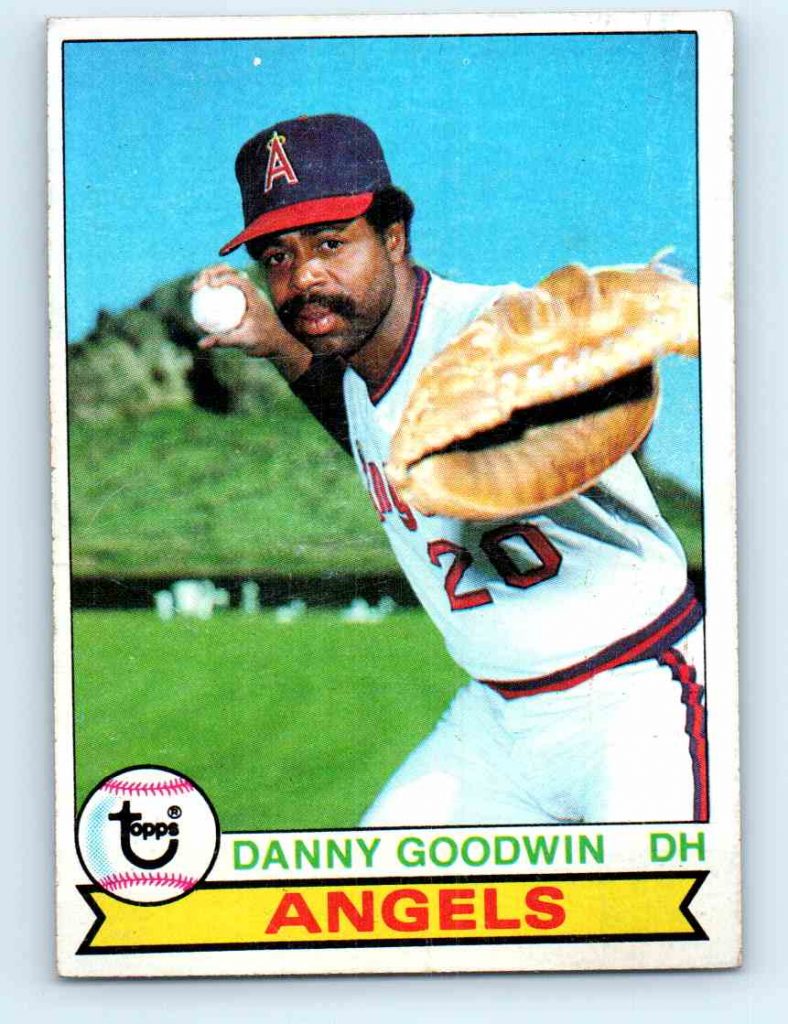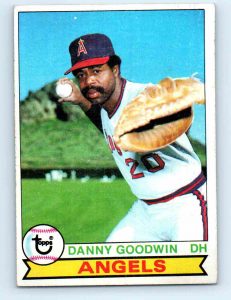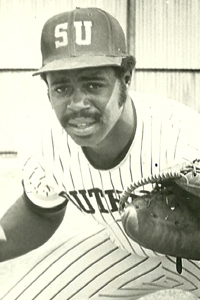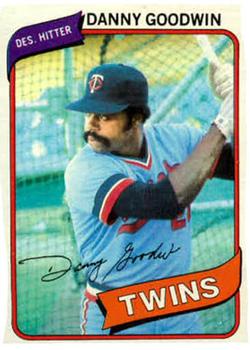

In this five-part series on the MLB draft, Rob Neyer begins in the 1970s with a profile of Peoria high school legend Danny Goodwin—the only player in baseball history to have been the first overall pick in two separate drafts. Goodwin’s professional performance—which failed to live up to the promise of his amateur career—highlights the perilous nature of the quest for fresh talent.
Without a doubt, the defining characteristic of Major League Baseball’s amateur draft has always been uncertainty. Some years ago, analyst Rany Jazayerli conducted a comprehensive study and found that once you get past the very first pick, the draft becomes essentially a crapshoot. And especially once you’re past the first 10 or so picks.
Except here’s the thing: Even those overall No. 1 picks are crapshoots. They’re just not quite as crapshoot, if only because every once in a while an Alex Rodriguez or Ken Griffey Jr. or Bryce Harper comes along. That’s what the numbers say.
But if you want to know about the capriciousness of the draft—and yes, even the very first pick in the draft—you need look no further than Danny Goodwin.
If you haven’t heard of Danny Goodwin, don’t beat yourself up; Goodwin finished his Major League career back in 1982, having spent most of his eight-year professional career in the minors, and showing real promise in just two of his brief Major League trials.
If you have heard of Danny Goodwin, it’s probably because he remains somewhat famous, at least in some circles, as the only player in history to get drafted No. 1 overall—twice.
Goodwin played high school baseball in Peoria, Illinois. As a 17-year-old senior, Goodwin hit a home run that people in Peoria are still talking about. According to researcher Bruce Markusen, “No one happened to film or videotape the Goodwin monstrosity, but the epic home run was not missed by major league eyes. About 20 big league scouts had gathered in Peoria to watch Goodwin that day.”
By virtue of their 106 losses in 1970, the Chicago White Sox owned the first pick in the 1971 draft, and the choice was clear. According to The Sporting News (TSN), anyway.
“One thing almost every club agreed upon,” TSN’s Jack Lang wrote, shortly after the draft, “was that the nation’s No. 1 prospect was Danny Goodwin of Peoria, Ill., a 6-1, 195-pound catcher. His name had been mentioned most prominently before the draft so there were no surprises when the White Sox, selecting first, announced their desire to negotiate for Goodwin. He was expected to be signed for a $100,000 bonus.”
That figure hardly seemed outrageous; after all, six years earlier, Rick Monday—the first-ever draft pick in the first-ever draft—had signed for $100,000 on the nose. That said, it’s never been confirmed that the White Sox actually offered $100,000 (a significantly less generous $60,000 has since been reported). Whatever the figures, Goodwin eschewed the White Sox in favor of a scholarship from Southern University in Baton Rouge, Louisiana.
Southern was a small NAIA school that did have one claim to baseball fame: Lou Brock played there for three seasons before signing with the Cubs and later becoming a big star with the Cardinals.

Upon his induction into the College Baseball Hall of Fame a few years ago, Goodwin was asked about spurning the White Sox contract offer. “It wasn’t as hard as you might think,” he responded. “I played for, and I know it’s a cliché, the love of the game. I knew exactly what kind of player I wanted to be, and I was single-minded about it. The thing that I wanted to do, more than anything, was just play as hard as I could, and help my team win.”
Goodwin remained at Southern for four years, earning a degree in premed zoology. On the baseball field, he earned NAIA All-American honors as a sophomore and junior and was an NCAA All-American in his senior season when Southern joined that body. The same year, The Sporting News named him the 1975 College Player of the Year.
And throughout, the scouts just kept watching and waiting.
In 1975, the (then) California Angels owned the first overall pick and got the man (Goodwin) they wanted and got him signed for $150,000, shattering Rick Monday’s decade-old bonus record.
The negotiations took a while, though. Which might have been the ruination of Goodwin’s career. When he finally did sign, in July, the Angels were anxious to get him going as a professional. “I hadn’t been playing baseball for two months,” Goodwin later recalled. “Still the Angels wanted me to go through all kinds of drills right away. They wanted me to throw every day before games. I should have taken it slow. It was probably my fault as much as anybody’s, but I was young and I wanted to play. I ended up hurting my arm. But it was just a sore arm. There was no operation, no damage or anything like that.”
Read Out Baseball Bats Reviews: 10 Best Wood baseball bats
Perhaps not, but Goodwin had been so highly rated, in part, because he’d thrown so well in high school and college; someone had dubbed him “the black Johnny Bench.” And it seems he never threw well again, which meant his powerful bat would have to carry him.
In the minors, it looked like it might; in 1978, for example, Goodwin batted .360 to capture the Texas League batting title. With big-time power.
In the Majors, it looked like it might; in 1978 and ’79, Goodwin’s .286/.347/.488 batting line was plenty impressive for a Major Leaguer still in his middle 20s—even considering his relatively brief time in the Majors. But Goodwin fell off considerably in ’80 and ’81—by then he’d been traded to the Twins—and soon his bat just didn’t seem big enough to carry his glove. Goodwin’s professional career ended in 1986, when he batted .231 with eight homers in 83 games with Japan’s Nankai Hawks.
Did the White Sox and Angels make huge mistakes in those 1970s drafts?
I’m more inclined to criticize the White Sox than the Angels. If you have the No. 1 pick in the draft—it’s long been the only pick in the draft that gives you a pretty good chance at a future star—you really shouldn’t spend it on a player unless you’re willing and able to sign that player.
The Angels, though? It sure seems like they were hardly the only club with Goodwin atop their draft board. What’s more, it’s highly likely that if the Angels had not chosen Goodwin, they would have been disappointed regardless. Of the five picks immediately succeeding Goodwin, only No. 6, Butch Benton, reached the Majors—and he batted .162 in 51 games. The biggest first-round success stories were catcher Rick Cerone (catcher, Indians) and Clint Hurdle (outfielder, Royals). Neither of whom would become real stars.
It’s not terribly uncommon for tremendous amateur talents to falter in the professional ranks, for any number of reasons. The only thing about Danny Goodwin that was terribly uncommon—truly unique, actually—was being regarded as the premier amateur talent twice, four years apart.

